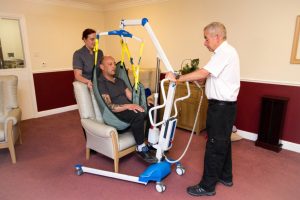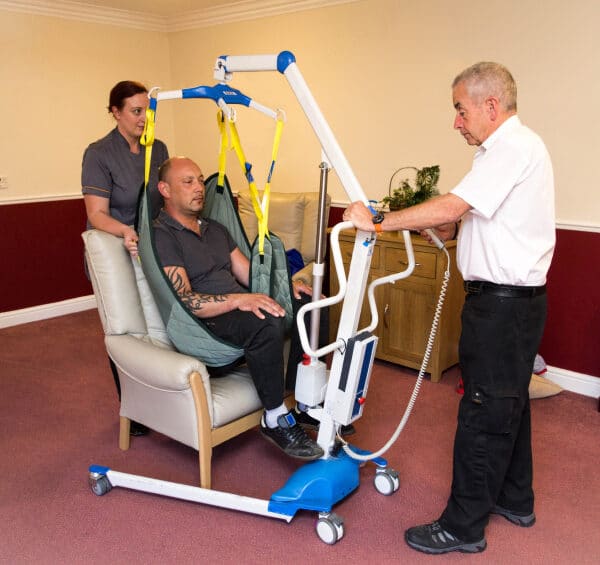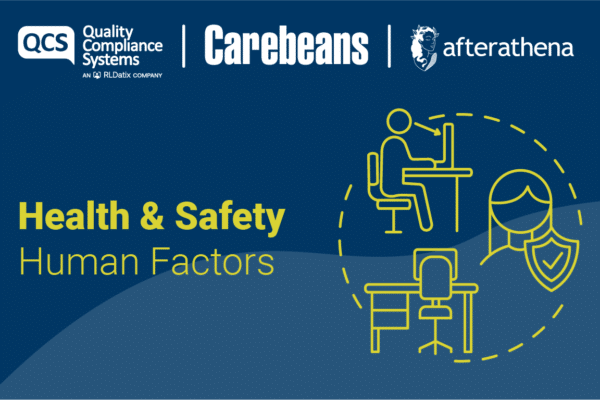 The use of stand assist lifters or passive Lifters in a residential care home or other healthcare environment is required to support the movement of elderly residents who have restricted or no mobility. The active lifters or hoists, also known as stand assist lifters, support a person into a semi-standing position for transfers or for supported walking. The mobile lifter or overhead hoist known as a passive lifter is used in most residential care homes worldwide.
The use of stand assist lifters or passive Lifters in a residential care home or other healthcare environment is required to support the movement of elderly residents who have restricted or no mobility. The active lifters or hoists, also known as stand assist lifters, support a person into a semi-standing position for transfers or for supported walking. The mobile lifter or overhead hoist known as a passive lifter is used in most residential care homes worldwide.
Hazards and risks in using hoists and slings
The risk associates with using hoists and slings are as follows:
- Death to the person using the sling
- Fractures caused by falling out of the sling
- Cuts and bruises
- Skin tears
The risk and hazards associated with using equipment such as slings and hoist can be minimised with the following:
- Only competent staff using the equipment
- Development of risk assessment and safe working procedure
- Correct number of staff to use the equipment
- Equipment in good working order and maintained and inspected before use
- Suitable equipment for the actual lift
- Correct lifting accessories used with the sling
- Suitable environment for the use of the equipment
Cases of death caused by the use of a sling
Case A – taken from the HSE website
‘A healthcare firm and its director have been ordered to pay more than £335,000 in fines and costs after a 100 year-old resident died from injuries she sustained in a fall from a hoist.
The owners of the nursing home, and its director, were both sentenced after an investigation by the Health and Safety Executive (HSE) established that her death could have been prevented had a better system for handling and moving residents, supported by appropriate staff training, been in place.
The deceased fell as she was being moved by two carers between a chair and a bed using a hoist. She suffered multiple fractures when she hit the floor, including her skull, hip and knee.
HSE established that her two carers had been employed for less than a year at the time of the incident. The sling used to move the deceased was very complicated to fit correctly and the carers were given no training in how to safely use the sling. The sling was also not the one recommended by Central Bedfordshire Council as being suitable for the resident’s medical conditions. The deceased resident was therefore not securely positioned within the sling and when she moved herself forwards, she fell out, hitting the floor.
’
Further details on this case on the HSE website.
Case B – taken from the HSE website
‘A care home company has been fined £100,000 after an elderly resident died after falling from a hoist while being moved. The resident suffered head injuries and died. Two carers had placed the resident into a sling to move her from the bed to a chair.
A sling, a piece of fabric designed to take the weight of a person, is placed under the individual and is attached by means of a series of hooks, loops or clips to a patient hoist which is then operated to lift and transfer the individual. While the hoist was stationary one carer turned away to pick up the elderly resident’s slippers and the other carer was behind the mast of the hoist. The elderly lady fell forwards to the ground and suffered a five-inch wound across her scalp and bruising to her head. She died more than a week later.
A Health and Safety Executive (HSE) investigation into her death found the sling loop fixings attached to the hoist were wrongly adjusted. A safety pommel, which would have prevented the resident from falling, had not been used.
Staff at the home had not received any information, instruction or training in the use of the sling, the pommel or the sling loop fixings. The sling loop fixings were not recorded in the risk assessment or the care plan for the resident and there was no safe working procedure for the sling.’
Further details on this case on the HSE website.
Legislation
The legislation that covers the requirement of using hoists and slings is:
- Management of Health and Safety at Work Regulations
- Manual Handling Operations Regulations
- Lifting Operations and Lifting Equipment Regulations (LOLER)
- Provision and Use of Work Equipment Regulations (PUWER)
The employer’s duty
Regulation 3 of the Management of Health and Safety at Work Regulations requires that all significant risks with work activities are risk assessed, including the use of equipment such as hoists or slings. All employers must ensure that there is a comprehensive risk assessment developed for each resident who will be assisted with hoists or slings, and it must be reviewed regularly.
Instruction, information, training and supervision
All users of hoist and slings and other lifting equipment will require suitable and sufficient instruction, information, training and supervision to ensure they use the equipment safely.
Near misses, incidents and dangerous occurrences
The employer must investigate any near miss or incident that occurs involving the use of hoist, slings and other lifting equipment.
QCS policies
QCS has guidance and policies to support your service in meeting the requirements of health and safety.
References
HSE – Care home fined following the death of resident
HSE – Getting to grips with hoisting people
legislation.gov.uk – The Management of Health and Safety at Work Regulations 1999
HSE – Manual Handling Operations Regulations 1992 (as amended) (MHOR)
HSE – Lifting Operations and Lifting Equipment Regulations 1998 (LOLER)
HSE – Provision and Use of Work Equipment Regulations 1998 (PUWER)






